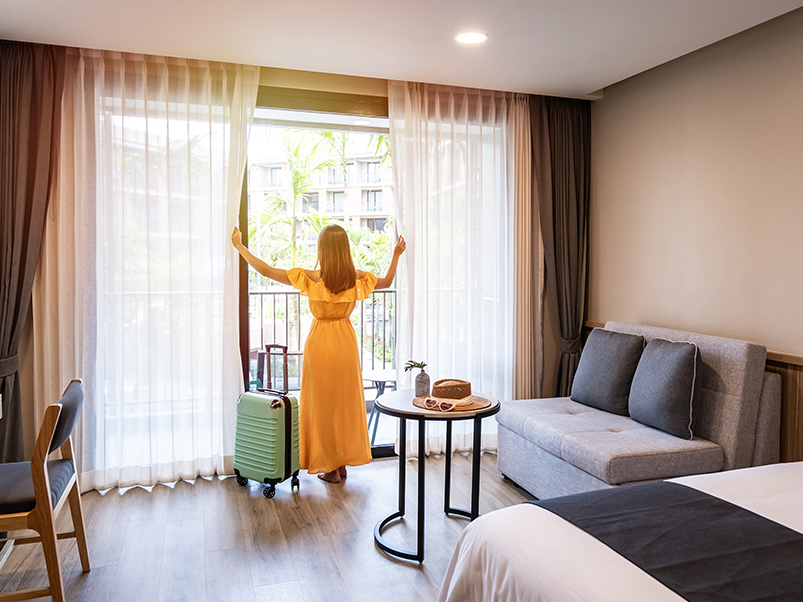
A “granny annexe” (also spelled “annex” in some British usage) is a self-contained, often small dwelling unit built either attached to or detached from the main home. Its purpose is typically to provide independent living for a relative (often an older parent) within the same garden or property envelope.
For older people the benefits include independence, near-family contact and privacy; for the host family it’s a way to keep loved ones close while still respecting their autonomy.
While many people immediately think “elderly parent”, the concept is broader — younger adult children, returning graduates, even guest/visitor space can use annexes. the-green-room.co.uk+3grannyannexe.com+3Norwegian Log+3
Why Seniors Might Choose a Granny Annexe
There are multiple reasons why building or adapting a granny annexe makes sense for older people:
- Staying at home: Many older people want to remain in or near the family home rather than relocate to a care home. An annexe allows that with appropriate support and adjustments.
- Independence with safety: The annexe gives the person their own space (bedroom, lounge, sometimes kitchen/bath) yet you’re close enough for informal support or check-ins.
- Cost-effectiveness: Compared to full time residential care, building or converting a annexe may turn out to be a smarter investment. One source notes: “Compared with the costs of full time care at home or in a care home … some granny annexe prices can be much less.” agespace.org
- Future proofing: The annexe can adapt over time (for example if mobility needs increase) or might later be repurposed (guest accommodation, rental, etc) if circumstances change.
- Family closeness: It supports multi-generational living in a way that preserves privacy for both the older person and the rest of the household. Many families find it emotionally satisfying.
Key Considerations Before You Build or Convert
Building an annexe is more than just erecting a small building. For seniors and their families, certain factors are especially important.
Planning & legal aspects
- You’ll need to check with the local authority whether planning permission is required. It’s a common myth that “granny annexes don’t need planning permission”. In fact they often do because they are independent living units rather than incidental garden buildings. UK Caravan Centre+2Grannexe+2
- One guide explains that for “permitted development rights” to apply (which allow certain outbuildings without full application) the structure must be incidental (not full living accommodation) — which means many annexes won’t meet that. Grannexe
- It’s wise to get professional advice (architect/planning consultant) because classification as “ancillary” or “incidental” affects what you can do. napc.uk+1
- Building regulations may apply, especially for things like insulation, fire safety, accessibility, airflow, drainage.
- Issues like who pays council tax, whether the annexe is treated as part of the main property or as a separate dwelling, need checking. For example, one guide says the annexe may be part of the main property for tax purposes if it’s occupied by a relative. Summerhouse24+1
Cost & budget
- Costs vary widely. According to one breakdown:
- Traditional brick annexe: £60,000 – £120,000+. Hully Pods Affordable Garden Pods+1
- Prefabricated garden units/kit options: from approx £20,000-£70,000 depending size/finish. Hully Pods Affordable Garden Pods+1
- One “average build” cost estimate: around £90,000. checkatrade.com
- Senior-friendly design additions (wider doorways, level access, accessible bathroom) may push cost higher – but are very worthwhile.
- Consider long-term running costs: heating, insulation, maintenance, connectivity (internet/phone) particularly important if occupant is less mobile.
Design for seniors
- Ensure accessibility: ground floor living, level thresholds, wide corridors, grab rails, non-slip flooring.
- Consider safety features: good lighting (especially at night), emergency call systems (or simply a reachable telephone), easy access to help or family.
- Comfort matters: insulation (to reduce cold, which older people feel more), good heating controls, ease of maintenance (less need to climb ladders etc).
- Location & relationship to main house: Close enough for oversight but far enough for privacy. A separate entrance often helps.
- Future-proofing: Think ahead. Even if mobility is fine now, may not always be. Designing with adaptability in mind saves cost later.
Family dynamics
- Clarify what each party expects: Who pays what? Who is responsible for maintenance? What happens if resident moves out?
- Consider privacy and independence: The annexe should feel like “their home”, not just a room in your house.
- Think about how it fits the garden/home and neighbours: overshadowing, access, potential noise, parking, etc.
Suggested Options & Models
Here are some concrete suggestions (UK-based) you might explore when thinking about a granny annexe.
- Norwegian Log: Offers high-spec garden annexes built from Scandinavian spruce, fully insulated, varying sizes (1-4 bedrooms) and designed for family/loved-one living. Norwegian Log
- OffPOD: A steel-framed garden annexe provider offering “turn-key” packages (kitchen, shower room, flooring, full project management) with starting footprints and pricing: e.g., 22 sqm from £59,995. OffPOD
- Planning / Permission help: NAPC (annexe planning experts) provide guidance for homeowners on what permissions are needed and how to apply. napc.uk
- Cost guidance: Sites like Summerhouse24 provide detailed breakdowns of what to expect in terms of cost, tax, and whether you might get council tax exemption. Summerhouse24
These firms give you a starting point for discussion. Visiting showrooms, viewing previous builds, and talking to homeowners who have done it can also be helpful.
How to Plan the Project: Step-by-Step
Here’s a suggested timeline/process for planning and building a granny annexe for a senior relative:
- Clarify the need & brief
- Who will live there? What level of independence do they have/will they have?
- What level of care or oversight do you expect?
- Do you have sufficient garden space or can you convert part of the house?
- What is your budget (both build cost and ongoing costs)?
- Check feasibility
- Garden size, orientation, access, services (electricity, water, drainage).
- Discuss with family the dynamics (privacy vs support).
- Talk to local authority/planning to understand policy in your area (annexes, use, permissions). Use guides like NAPC’s. napc.uk+1
- Explore building options
- Conversion of existing space (garage/loft) may be cheaper but may offer less independence or privacy.
- Prefabricated garden annex vs bespoke build – weigh cost, finish, timeline.
- Decide size, layout, finish standard (kitchen/bathroom, level access etc).
- Budget and funding
- Get quotes from reputable suppliers/contractors.
- Consider if you’ll make equality investments (accessibility, future-proofing).
- Factor in planning/building control fees, VAT, connection fees, utility works.
- Consider running costs (heating, insulation, maintenance).
- Investigate any tax/council-tax implications: e.g., the annexe may be exempt if certain criteria met. Summerhouse24+1
- Design & planning application
- Engage architect/designer if needed.
- Submit planning/application where needed. The planning consultants note that annexes may not qualify under simple permitted development. Grannexe
- Work on building regulations, accessibility, safety, insulation.
- Agree final layout, materials, finish.
- Construction/installation
- Site preparation: groundwork, foundations or base.
- Delivery of module/prefab or building construction.
- Utility connections, interior fit-out (kitchen, bathroom, heating).
- Final inspection, handover. Many providers (e.g., OffPOD) note turnkey delivery in weeks. OffPOD
- Handover & occupation
- Ensure everything works (heating, lighting, doors/windows, insulation).
- Let the older occupant settle in; ensure they have all access to support if needed.
- Monitor how it’s working: Is the independence working? Is support adequate? Are there any adjustments needed?
- Ongoing review & adaptation
- Check if accessibility still meets needs; if mobility declines, you may need to adapt further.
- Maintain the building: insulation, windows, heating system.
- Keep the relationship working: Does the occupant feel ‘home’? Are you comfortable with the support arrangement?
- Consider future use: If the occupant moves or their needs change, what is the plan for the annexe (guest house, rental, studio, return to main house)?
Pros & Cons: Realistic View
Advantages
- Supports independent living close to family.
- Potentially more cost-effective than moving to a care home or frequent commuting for visits.
- Boosts property value / flexibility of use (depending on layout, quality).
- Flexible use: over time it could serve other purposes if the occupant changes.
Potential drawbacks / Risks
- High upfront cost (even “cheap” annexes still £20k+ or much more).
- Planning/permission risk: if you build without correct approvals you may face enforcement. For example:
“Many granny annexe projects face similar planning challenges … the more self-contained the annexe, the more likely you’ll need planning permission.” Grannexe
- Maintenance and running costs may be underestimated. Older occupants often require high comfort, good heating etc.
- Family dynamics: sharing close space always has relationship implications (privacy, boundaries, independence vs help).
- Opportunity cost: Could the money be used for something else (e.g., adaptation of main home instead of separate annexe)?
- Resale/marketability: The use of the annexe may impact the main property’s valuation or resale potential; also conditions of use may limit future flexibility (e.g., planning may restrict separate dwelling or letting).
Practical Suggestions for Seniors & Families
Here are some actionable suggestions tailored for seniors and their families when opting for a granny annexe:
- Visit show homes or view completed annexes: Seeing and experiencing the space helps make sure it suits your comfort level and mobility needs.
- Prioritise accessibility: For example, instead of small steps have level threshold; choose non-slip floors; include good lighting (especially at night).
- Install safety and connectivity features: e.g., emergency call button/pendant, easy to reach thermostat, telephone/internet connection.
- Use smart heating and insulation: Older people feel cold more, and heating costs can rise. High-insulation build and programmable heating save money and improve comfort.
- Plan for furniture and layout: Make sure the seating is comfortable, lighting is adequate (for declining eyesight), the bathroom is senior friendly (grab rails, walk-in shower if appropriate).
- Integrate with family support but preserve independence: Agree on how and when help is offered or visits happen — aim for a balance.
- Think future proof: What happens if mobility reduces further? Could you modify for wheelchair access? Is there room for equipment? If the occupant moves out, is the building usable for another purpose?
- Communicate openly family-wise: Who will cover maintenance? What happens when occupants change? What is the exit plan?
- Check local rules for council tax / benefits: For example, if the annexe is occupied by a pensioner relative you may get exemptions or discounts. Summerhouse24+1
- Don’t ignore garden/plot impact: Building an annexe may reduce garden space, affect sunlight, neighbour views, parking – check all of this.
- Consider phased build or prefab solution if budget is limited: Instead of bespoke from day one you could opt for a modular unit or limit size so you can upgrade later.
Future Trends & Considerations
- With the UK’s ageing population and demand for multigenerational living rising, granny annexes are becoming more mainstream.
- Prefabricated/modular systems are improving in quality, lowering cost and build time. For example, garden annex models can be ready in weeks rather than months.
- Policies and planning frameworks may evolve: some local authorities may promote annexes as part of “ageing in place” strategies, but specific restrictions remain.
- Smart home/assistive technology integration will increase: e.g., fall detectors, remote monitoring, automated heating/lighting tailored for older residents. Some annexe providers already mention such features. agespace.org
- Sustainability concerns: Since many older people are living on fixed incomes, efficiency in insulation, heating, and low-maintenance builds are important.
Summary
For seniors (and their families) looking to combine independence, safety and family proximity, a well-designed granny annexe offers a compelling option. It enables older individuals to stay near loved ones in a comfortable, private home environment — while giving the host family peace of mind and flexibility.
However, success depends on good planning, realistic budgets, clear family communication, accessibility design, and compliance with planning/building regulations. The upfront investment can be significant, but long-term benefits in quality of life for both the older person and the family often justify it.
If you’re at the start of this journey: define your needs, research reputable suppliers, arrange visits, involve all stakeholders (senior occupant, family, contractor) early, and build in flexibility to adapt over time. With that approach, an annexe can become a place of independence, security and connection.



